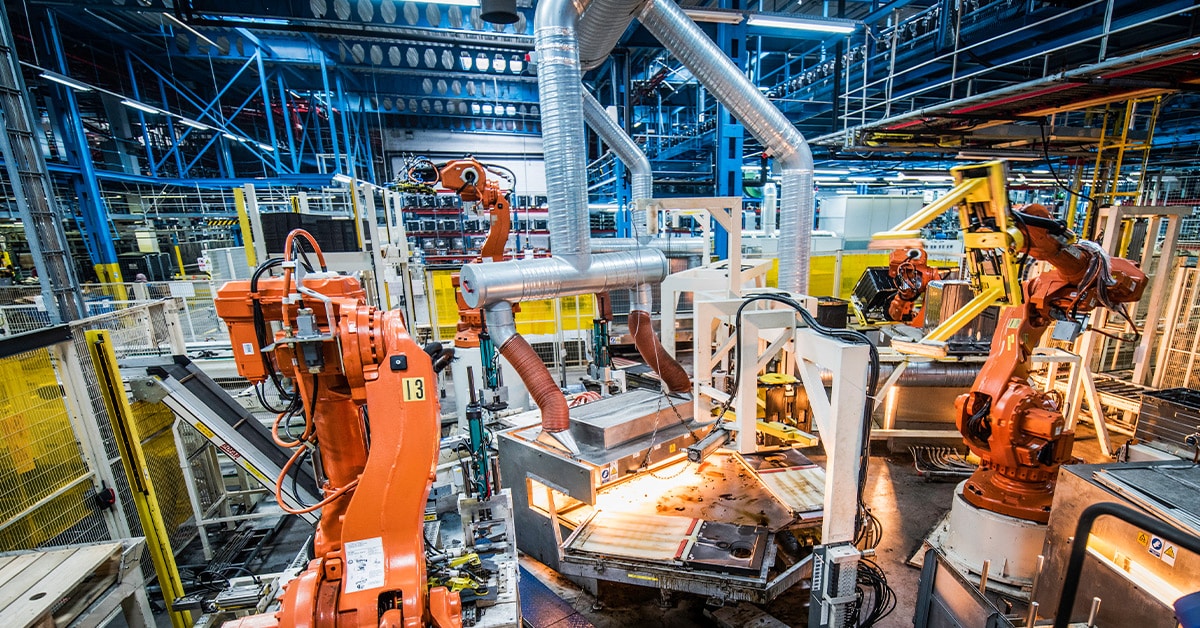What could your factory produce if it ran at full speed with no quality problems for every one of the 8,760 hours in a year?
Now compare that with the actual output. Almost certainly, there’s a lot of potential.
This is the idea behind the Total Effective Equipment Performance metric: to see what is theoretically possible and then identify ways of moving towards that ideal.
TEEP has similarities with OEE, but is less widely known and used. This blog starts out by asking, what is TEEP? From there it delves into how to calculate TEEP, why it’s important and what can be done to improve it. By the end, readers will know enough to decide if TEEP is worth investigating further.
What is TEEP?
TEEP compares what was produced with the theoretical maximum output. It’s a measure of potential that shows what could be achieved if everything that stops or slows production of saleable product was eliminated.
TEEP’s purpose is to help managers identify opportunities to increase output from existing assets. It’s not directly a maintenance metric, but maintenance — planned and unplanned — factors into it, along with every other reason for machine stoppage.
Like Overall Equipment Effectiveness (OEE), TEEP includes losses resulting from machines running at less than 100% of full speed, and losses due to quality problems. For investigating those though, OEE is sufficient. Where TEEP differs is in its focus on availability. It considers downtime and periods where machinery is idle, identifying opportunities to increase production, utilization and efficiency.
How is TEEP calculated?
The formula for TEEP is:
TEEP = (Availability) x (Performance) x (Quality) x (Utilization)
Two things to consider in this are: the definitions of each of those terms in the formula and the period over which TEEP is calculated.
The Availability component is the total time the equipment is planned to run, as a percentage of total calendar time (24/7). It considers factors such as not running at weekends or only running two rather than three shifts.
Performance is the ratio of how efficiently equipment is running relative to its maximum speed expressed as a percentage. It could be calculated as:
(number of parts actually produced) / (number of parts that would have been produced if the machine ran at full speed)
The Quality component is the percentage of good units produced versus total units.
Utilization is the percentage of time the equipment is planned to be producing. This is the same definition as used in OEE where deductions are made for planned maintenance, team meetings and other factors, such as not scheduling production.
The longest period over which TEEP is used is a year. It may also be measured quarterly, monthly or even weekly. Shorter periods are of less value as numbers will be influenced by unusual or random events. The important point is to be consistent over all three components.
TEEP vs. OEE (overall equipment effectiveness)
Anyone familiar with OEE will recognize that TEEP is OEE multiplied by the availability percentage. TEEP considers the full 24/7 operational potential while OEE focuses on equipment effectiveness only during scheduled operating hours.
From a maintenance perspective, OEE considers only unplanned downtime, which is, of course, disruptive and costly, but planned maintenance is excluded because it’s an important activity. However, planned maintenance still eats into hours that could otherwise be used for production. TEEP calls attention to this and promotes moves towards predictive maintenance solutions that aim to reduce all maintenance-related downtime.
More broadly, the difference is that while OEE helps improve performance during operational shifts, TEEP provides insights into equipment’s full potential utilization, including non-working hours.
Why is TEEP important for manufacturing?
TEEP has no direct bearing on maintenance or quality performance; other metrics do this better. Its value is in helping managers identify where to look for ways to increase the utilization of existing assets. Three specific applications are:
Maximizing equipment utilization
TEEP identifies where equipment could be running but isn’t. Shift changeovers, meal breaks, team meetings and lack of demand are all reasons for a low Availability component in the TEEP calculation. By drawing attention to this unused potential, TEEP pushes managers to identify underutilized capacity, which can avoid capital expenditure on new equipment and consider all means of optimizing production schedules.
Identifying bottlenecks
Bottlenecks are one of the biggest causes of low equipment utilization. They arise from unbalanced capacity throughout the manufacturing process, resulting in downstream operations being underutilized. Bottlenecks are often obscured by inventory and differences in shift patterns and maintenance schedules, but are a major cause of inefficiency. Applied to departments or machines, TEEP will show where utilization is high and where it drops off dramatically, highlighting the bottleneck operation or process.
Improving ROI
TEEP helps managers find additional capacity within their plant. With this information they can increase output without buying new equipment and improve ROI from existing fixed assets. The result is to dilute overheads and lower unit costs, which in turn allows more competitive pricing and creates opportunities to win more business.
Steps to improve TEEP
Managers are often dismayed when they first start measuring TEEP. Almost inevitably, the percentage is very low and there is a great deal of opportunity to make improvements. The question they must then address is — how and where should those improvements be made?
Reduce downtime
Preventive maintenance solutions, such as regular inspections and lubrication, along with replacing consumable items such as filters and those prone to wear like belts, will reduce unplanned stoppages. However, with any PM there is always the risk of doing too much or the wrong type. This is addressed with predictive maintenance, which uses machine health monitoring to detect increasing failure probability, allowing maintenance to be delayed until failure is imminent.
Increase availability
Rearrange shift patterns or provide overlap staffing so lines don’t stop for breaks or team meetings. Increase the hours for which bottleneck operations run. Cut planned downtime by implementing predictive maintenance.
Enhance performance
Ensure equipment operates at maximum efficiency by addressing performance issues such as chronic stoppages and reduced speed running.
Help for increasing maintenance effectiveness
TEEP shows managers what could be achieved with existing production assets. The strategic insights this metric offers help increase ROI, capacity and output while driving down unit costs.
Adopting TEEP often leads to a renewed focus on the time spent maintaining production machinery. While PM is essential, and therefore excluded from OEE calculations, it still reduces the total hours for which machines are available. One way of tackling this is to adopt a predictive maintenance strategy.
As a leader in outsourced industrial maintenance, we help manufacturers address short and long-term challenges and improve the effectiveness of their maintenance operations. Contact us for more information.






